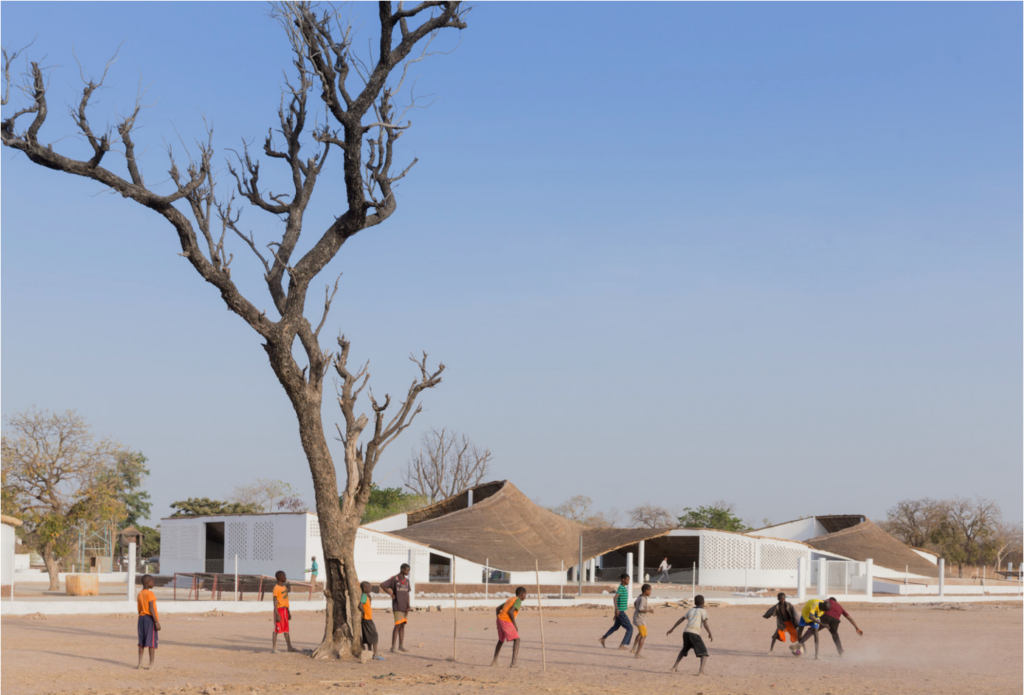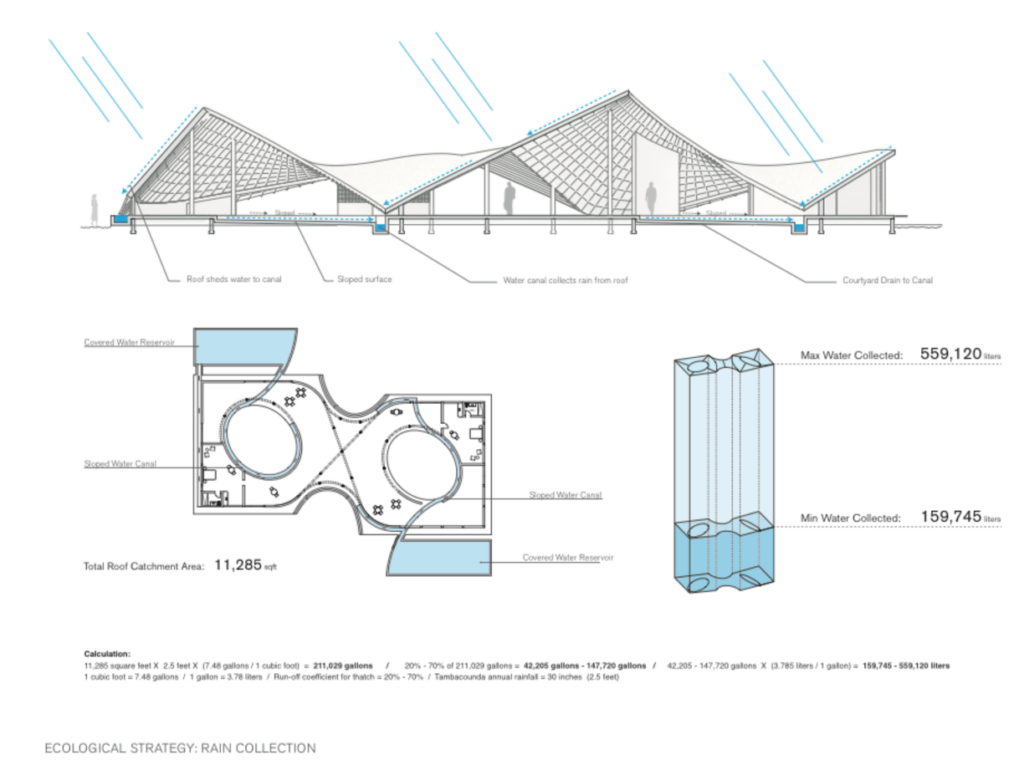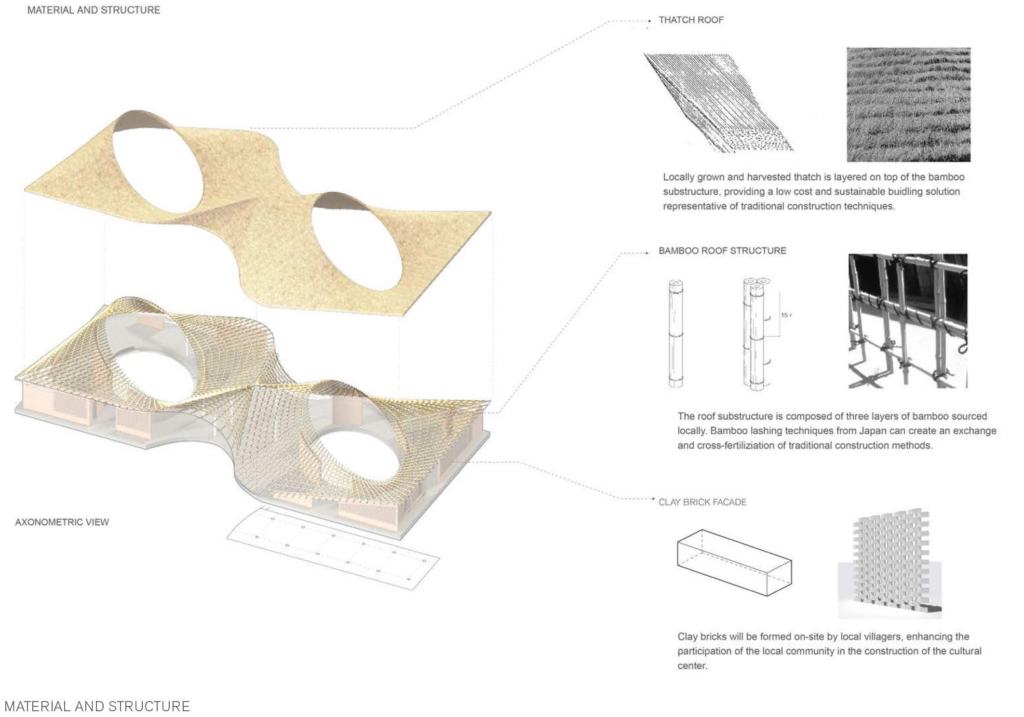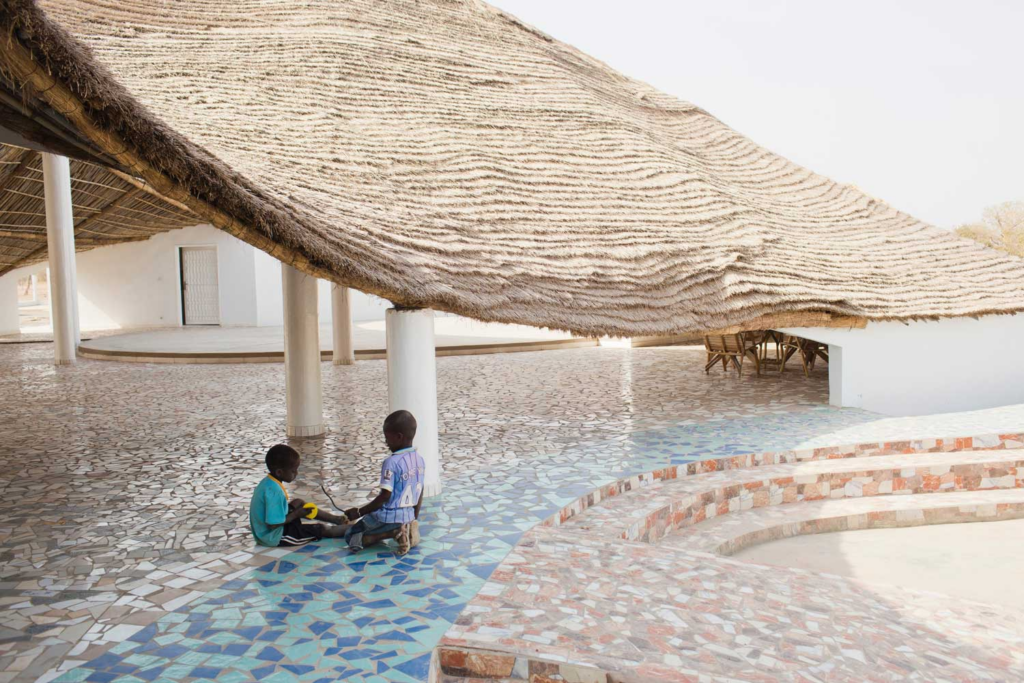
It was soon after I moved to Houston in 2015, amidst my adjustment to a new city and academic life, that I invited Toshiko Mori to give a lecture at the University of Houston, where I served on the program committee. Initially drawn by our shared interest in merging global ideas with local sensitivity, I had not anticipated how deeply her presentation of the Thread Artist Residency and Cultural Center would influence my vision of architecture. Listening to Mori describe the building firsthand was fascinating—it became more than a case study; it became a personal benchmark for architecture that prioritizes dignity, community, and care. Today, a decade later, Thread remains a constant reference point in my work, exemplifying how thoughtful design can profoundly impact communities.
Before discovering Thread, my architectural influences came from my time working for Rem Koolhaas, whose buildings embraced theatricality and spectacle, and from my extensive research on Japanese architecture and specifically on Kazuyo Sejima, whose designs taught me elegance and clarity. Koolhaas’s provocative spaces had long inspired me, while Sejima’s subtle precision deeply informed my designs. Yet, hearing Mori speak about the Thread Artist Residency introduced me to another dimension: architecture as a quiet but powerful tool for dignity and everyday improvement, rooted firmly in the lives it touches.


Thread as Community Catalyst
Located in Sinthian, a remote village in eastern Senegal near the border with Mali, Thread was developed through collaboration between the villagers and the Josef and Anni Albers Foundation. Mori designed the center pro bono, ensuring the structure integrated gracefully into local cultural traditions rather than imposing external ideas. It quickly became an essential community resource, serving as an artist residency, communal space, agricultural training center, and a crucial water collection facility.
Thread’s architecture is not loud or dominant; it quietly respects and enhances the local environment and culture, fostering dignity and community growth through sensitive interventions.

Innovative Design Responding to Local Needs
In Sinthian, water scarcity is a harsh daily reality, with women traditionally carrying water long distances from distant springs—a physically demanding and time-consuming task. Mori’s ingenious design features a roof capable of collecting and storing rainwater, providing approximately 40% of the villagers’ domestic water usage (Architectural Record). This intervention not only eased daily hardships but also supported new agricultural opportunities during the dry seasons.
The selection of local materials, including compressed earth blocks, bamboo, and thatch, underlined the project’s commitment to environmental sensitivity and economic sustainability. Mori’s team carefully trained locals to construct the center, equipping them with practical construction skills, which they applied in their own homes.


Empowering through Knowledge Transfer
One of Thread’s most compelling attributes is its role as a catalyst for education and cultural exchange. Mori immersed herself deeply within the local context, drawing inspiration from traditional community materials and indigenous construction techniques. Her sensitivity and openness allowed her to gain profound insights, which she thoughtfully translated into the project. In a reciprocal gesture, Mori reinvested her architectural fee into specialized local training programs, directly benefiting the community by equipping villagers with valuable, transferable skills. These newly acquired techniques were quickly embraced by the community, notably in the use of innovative brick lattice façades, bamboo structures, and thatched roofing systems. Villagers proudly incorporated these skills into their homes, sustainably enriching their built environment.

This mutual exchange encapsulates Mori’s philosophy of respectful collaboration, nurturing independence, and celebrating local identity. Through Thread, architecture emerged as a powerful instrument of education, enabling the community to sustainably shape and enrich their own environment.
Recycling as an Ethical and Beautiful Statement
Thread gracefully embodies recycling as both an ethical imperative and a refined aesthetic choice. Mori skillfully repurposed locally sourced, discarded materials to craft intricate mosaic flooring, whose beauty dynamically responds to the changing interplay of natural light, reflections, and gentle shadows throughout the day. These carefully composed mosaics transform humble, overlooked materials into captivating visual statements. Inspired by local building traditions, Mori embraced regional construction methods, integrating compressed earth blocks, bamboo, and thatch to amplify Thread’s environmental sensitivity and economic sustainability. Additionally, the building’s distinctive brick lattice façades generate cooling breezes, passively moderating the climate within, thereby harmonizing comfort with environmental consciousness. In Thread, architecture eloquently asserts recycling as a practice that deeply respects and elevates the community it serves.
Cultural Exchange and Economic Vitality
Since its inauguration, Thread has developed into a vital cultural hub, hosting artists worldwide and creating an enriching exchange of global and local ideas. The residency has become a space where the community engages with diverse artistic practices, fueling creativity and cultural curiosity.
Beyond cultural benefits, Thread has economically invigorated Sinthian by stimulating local markets, employment opportunities, and entrepreneurship. Workshops, performances, markets, and health clinics have revitalized local economic activities, making the building an integral component of daily life in Sinthian and enhancing the community’s economic resilience.

International Recognition and Influence
The Thread Artist Residency quickly received international acclaim for its impactful design, notably becoming a finalist in the prestigious Aga Khan Award for Architecture in 2016. This acknowledgment validated Thread’s success as an exemplary model of socially impactful architecture.
Thread’s distinctive inverted, thatched roof, specifically designed for rainwater collection and agricultural support, is uniquely innovative. However, its broader ethos of resource-sensitive design and meaningful community collaboration resonates in other notable examples. The GHESKIO Cholera Treatment Center in Port-au-Prince, Haiti, by MASS Design Group, similarly emphasizes local materials and passive cooling techniques sensitive to environmental and cultural contexts. Likewise, the Bait Ur Rouf Mosque in Dhaka, Bangladesh, designed by Marina Tabassum, utilizes traditional brickwork and natural light to create a serene community space, reflecting a deep connection to local heritage and climate-responsive design.
These examples illustrate how architecture, as a profound study of the human condition and the sacred act of engaging with the earth, resonates globally. Principles similar to Thread’s responsive and empathetic design approach influence architectural dialogues worldwide, encouraging architects to prioritize community dignity and environmental harmony.
Architecture as Continuous Dialogue
Reflecting on Thread ten years later reinforces a crucial architectural lesson: effective design involves continuous dialogue and responsiveness to changing local contexts. Mori’s building demonstrates that meaningful architecture evolves alongside the communities it serves, fostering resilience, pride, and empowerment.
Thread is not a static monument but a living example of how careful, humble design decisions profoundly impact human lives, quietly nurturing the community’s growth and evolution. It remains a vibrant lesson in how architecture can respect, reflect, and encourage the community’s values, traditions, and aspirations.

Extending Thread’s Vision – Fass School
Building upon Thread’s success, Mori continued her commitment to dignified and community-driven architecture in Senegal with the Fass School and Teachers’ Residence. Located in Fass, this school embodies a similar ethos, employing local materials and sustainable building practices. It serves as a learning environment for 300 children, blending secular education with traditional teachings. The integration of teachers’ residences further demonstrates her understanding that strong education depends on supporting educators and embedding them within the community.
Expanding the Vision
Reflecting on these projects, it becomes clear that architecture, when carefully considered, can genuinely uplift communities. Mori’s Thread and Fass School set examples for architects globally, illustrating how design deeply rooted in empathy, dignity, and practical wisdom can create profound and lasting impacts.
The projects have encouraged an essential dialogue within architectural education, influencing the ways architects think about community engagement, resource management, and the role of design in society. They demonstrate clearly that good architecture arises not from grandiose gestures but from sincere attention to everyday life, local traditions, and community engagement.
Architecture’s Lasting Legacy
Ten years on, the legacy of Toshiko Mori’s Thread Residency continues to resonate within the architectural community and beyond. Its quiet dignity, elegance, and thoughtful problem-solving remain a powerful testament to architecture’s ability to transform lives.
Thread also demonstrates that beauty and care can be created with minimal resources. Great design is not a finite resource—it is a choice we make by observing more and demanding greater humanity in the spaces we shape. Design influences every aspect of our lives, and Mori’s project embodies the true meaning of design for dignity—where beauty, functionality, and compassion intersect to create lasting social impact.
As we confront future architectural challenges, Thread remains a guiding inspiration, reminding us that the essence of architecture lies not only in form or aesthetics but in its enduring, meaningful relationships with people, cultures, and places. This philosophy—thoughtful, modest, and deeply respectful—continues to shape my practice today, more than a decade later.

Architecture’s Ongoing Promise
The story of Thread is far from finished; it is an evolving narrative. It teaches us that patience, humility, and the ability to truly listen are essential to making meaningful contributions. Ultimately, Thread confirms that the most profound architectural legacies are not defined by awards or recognition but by the sustained, everyday improvements they bring to people’s lives. Everyone deserves good design.
Thread does not simply exist within its walls but extends into the rhythms of daily life, weaving itself into the fabric of the community much like its name suggests. Movement through the building spills outward, creating connections that reinforce social bonds. Even beyond its physical form, design can gently improve daily existence.
Thread remains a lasting testament to the power and promise of thoughtful architecture—one that quietly reinforces dignity, celebrates humanity, and renews our shared belief that buildings should serve those who inhabit it. This is what makes it truly habitable architecture.

We have three perspectives shaped by experience: Rem Koolhaas’s provocative spaces, Kazuyo Sejima’s subtle precision, and Toshiko Mori’s quiet yet powerful dignity in architecture. Mori’s Thread fostered collaboration between villagers and the Foundation, ensuring cultural traditions were heard rather than imposed. By understanding daily life, she designed a roof that collects rainwater, addressing water scarcity. Training locals in construction preserved traditional knowledge while promoting economic and environmental sensitivity. For Mori, “education and cultural exchange” were central, making architecture a “powerful tool for dignity and everyday improvement, rooted firmly in the lives it touches”. The way architecture should be.
I too, deeply resonate with THREAD Cultural Center as a powerful connector to place, as a storyteller, and builder of identity. Rodriquez’s insights into THREAD demonstrates the capacity of architecture to figuratively and literally weave narratives that strengthen community, preserve culture, and affirm our humanity.
What an inspiring and insightful way of thinking about the needs and the resources of the communities in order to create meaningful spaces that have a real impact in society.